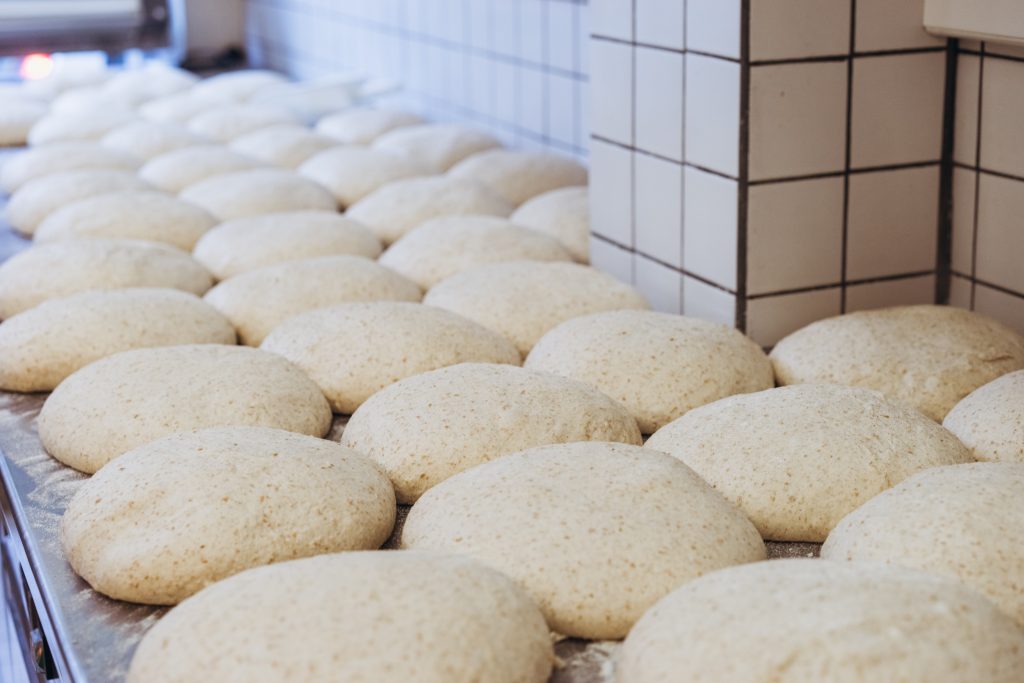This post contains affiliate links which we are compensated for if a purchase is made. Using links costs you nothing and helps to support the ongoing creation of content. Thank you for using them.
Can You Use Bakers Yeast To Make Beer? If you are searching this query it usually means that you have run out of brewers yeast or lost the packet of yeast that came with the brewing kit. So can proceed with the brew using baker’s yeast?
Baker’s Yeast can be used to make beer and it will ferment and produce ethanol. However, as its primary purpose is as a raising agent in bread it generally converts sugars to carbon dioxide much faster than brewing yeast. This rapid production of carbon dioxide can create problems with the size of the Krausen in the fermenting process and also affect the flavor of the final brew slightly. Additionally, bakers’ yeast is not as tolerant of higher alcohol contents.
What Are The Disadvantages Of Using Bakers Yeast?
Apart from the reduced tolerance to alcohol concentrations, there is a couple of other disadvantages associated with using baker yeast that are worth consideration.
The first consideration is the generally larger volume of foam (or Krausen) at the top of the brew in the fermenting vessel. This often occurs with baker’s yeast due to the relatively rapid production of carbon dioxide gas. This expansion of the foam can lead to the foam escaping through the airlock at the top of the vessel which can make a bit of a mess.
To reduce the chances of this occurring it is advisable to increase the volume of headspace in the fermentation vessel, headspace volumes greater than 30% is generally recommended. The use of an overflow tube is also recommended to manage any foam that escapes from the vessel.
The second consideration is that Baker’s yeast does not produce a Krausen that flocculates as readily as brews prepared using brewer yeast. This is effect is partially related to the degree of carbonation that interferes with the flocculation process.
The flocculation of the Krausen at the surface of the brew allows the unwanted particles, such as the dead yeast to fall out of suspension and form sediment at the bottom of the beer. A more complete settling out of particles leads to a clearer final product.
The degree to which is that occurs is directly related to the extent of flocculation that occurs. That property is one of the reasons particular yeast strains are designated as “brewers” yeast. However, like most of these disadvantages, the clarity of the final brew can be managed and improved in a couple of different ways. This includes adding a fining agent or cooling your wort quickly to improve the rate of settling.
The degree of carbonation in the final beer can also be affected by the presence of baker yeast which tends to increase the level of carbonation somewhat, however, this is not the case with every single brew. To manage this the amount of priming sugar should be reduced by 20% to compensate for the difference.
The other difference with bakers yeast that it can increase the yeasty flavour in the beer which is not necessarily a disadvantage if that is the flavour you are after. This increase in flavour is a function of the reduced degree of flocculation which affects the degree of settling. This means that more yeast remains in the beer affecting the flavour.
Are There Different Types Of Yeast For Brewing?
Brewing yeasts are generally categorized into two main types, Ale and Lager yeast. Ale yeasts ones that generally react in the beer at the top of the fermenter and prefer warm temperatures around 60-70°F (18-20°C) and will become dormant at around 55°F (12°C).
Whereas lager yeasts operate at the bottom of the fermenter and prefer significantly lower temperatures of around 45 to 55 °F (7 to 13 °C). Lager yeast can operate at high temperatures producing a distinct beer style referred to as California Common Beer. It is a fruitier flavored beer that is created by the production of esters.
If you are brewing with bakers yeast temperatures between 60-70°F (18-20°C) is generally recommended. For the beginner brewer, it is best to start out with Dry Ale yeast as it is easier to control a temperature in that range.
Yeast is available in liquid and dry form with many homebrew stores preferentially stocking the dry form. The key advantage of the dry form is it is easier to store. Dry yeasts are often sold in small 7 gram packets which is ideal for the beginner brewer as it ideal for a 5-gallon batch, however, there are very few lager yeasts that come in this form.
Liquid yeast are also available in 50 ml foil pouches, however, these packages contain substantially fewer numbers of yeast cells than the standard 7-gram packets. As such there numbers need to be increased using a starter wort. The key advantage of liquid yeasts is there is many more yeast types available in this form.
Conclusion
The primary difference between baker’s yeast and brewer’s yeast that baker’s yeast is designed to produce carbon dioxide more rapidly to aid in the raising of bread whereas brewer’s yeast is focused on producing alcohol. Baker’s yeast will work successfully in a brew and there are numerous examples of this mentioned in homebrew forums. Good luck with whatever you decide to do and happy brewing.
